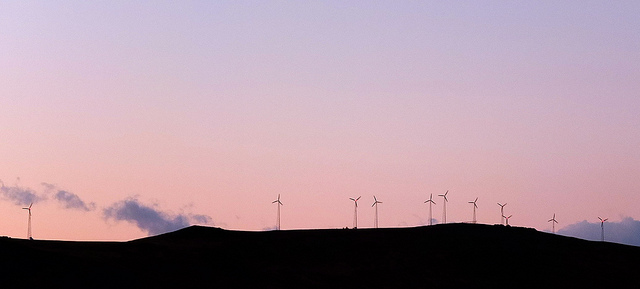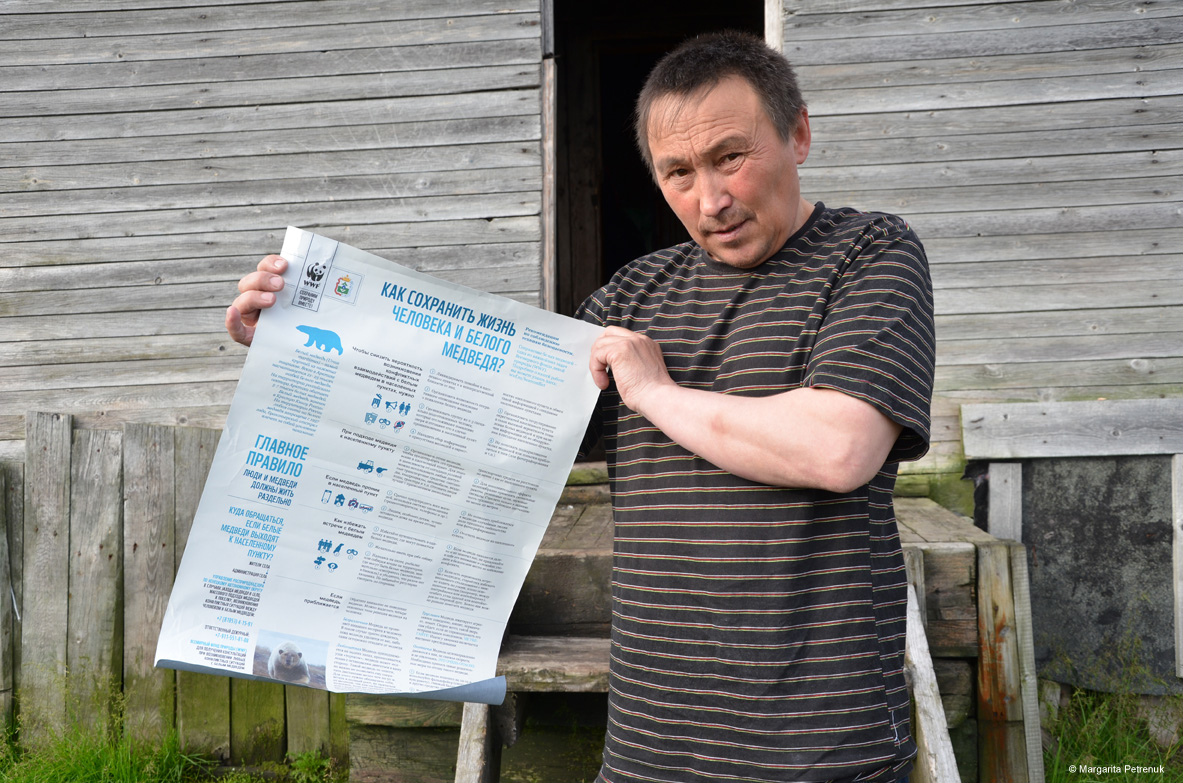
Solar panels, Colville Lake, NWT, Canada. © Klaus Dohring
Colville Lake is a small, remote community in the Northwest Territories (NWT) of Canada, north of the Arctic Circle – not the first place one might think of for solar power. As Klaus Dohring writes, the climate in Colville Lake is typical of the far north with challenging winters, but sun-rich summers. This article originally appeared in The Circle 03.15.
The only overland connection to Colville Lake – a community of about 160, mostly Dene First Nation residents – is the seasonal winter ice road, open about six weeks each year. We travelled to Colville Lake in June 2015 to install what we believe is the most advanced renewable energy project in the north to date. At that time of year, it doesn’t get dark at all. The sun intensity all summer is remarkable, and the sun hours are plentiful.
Electrical power in Colville Lake has been provided by diesel generators in a stand-alone micro-grid. It is one of the most expensive diesel generation communities in the Northwest Territories which is why it was chosen for a new power plant concept combining solar power with large scale battery storage and new diesel generators. The goal is to supply the community exclusively with solar power and eliminate diesel generation during the summer. Surplus solar energy will be directed into the batteries, with the battery bank alternating between generation and consumption day and night.
In winter, when the sun rarely shines, the community will continue to be supplied with diesel-powered generators although the operators are hoping to reduce generation time with the new power plant by up to 50 per cent. Shutting down diesel generation for extended periods benefits the community through noise reduction and emissions elimination, cost avoidance, autonomy from total dependence on diesel and greatly improved quality of life. Maintenance requirements are being reduced, and the diesel generator lifespan will be extended, thus reducing operating and replacement costs. In shoulder months solar power can still reduce the need for diesel generation.
To achieve this, we added an 82.5 kW AC solar system, alongside an existing phase-1 50kW solar system which had been installed in 2014. The finished generating system will have a total of 132.5 kW AC solar generation capacity, and over 200 kWhs of battery storage capacity. Monitoring systems allow for remote internet-based monitoring and recording of solar generation data. Our solar system is ground-mounted, using local ballast to avoid disturbing the permafrost because it “floats” on the ground above the permafrost.
Materials were prepared, premachined and pre-assembled in Ontario over the winter, packaged and crated up in custom-made crates for protection during transportation. The winter ice roads are rough and very challenging so sturdy crating is important to avoid transport damage. We safely delivered over 15 tons of solar materials into Colville Lake via winter ice road in February/ March 2015, without any transport damage.
On June 1st we were greeted by a still-frozen lake, snow , frost, and a few very sunny days which brought out a bountiful crop of mosquitoes. Due to the preparation work in our shop over the winter, the on-site work was mainly assembly of pre-machined parts, allowing us to install this project in less than 10 working days. This project was the largest solar installation in NWT in 2015, and to the best of our knowledge the Colville Lake solar system is the largest solar system anywhere north of the Arctic Circle. It is interesting to note that the International Space Station is also powered by an 82 kW solar system, in continuous operation for roughly 12 years.
Our solar system is fixed-angle and maintenance free. Whenever sunshine reaches a module the photovoltaic effect kicks in, and free electrons are generated to provide free and clean electricity to the micro-grid. There are no moving parts and – other than the slow and limited solar cell degradation – no wear and tear. The solar cells are warranted to generate at least 80 per cent of rated output after 25 years. Solar generation is directly linked with sunshine availability. It will still occur with scattered and diffuse light and low light conditions, but to a lesser degree.
Solar cells become more efficient at lower ambient temperatures, so the low air temperatures in the North actually benefit solar generation. Dry air has less water vapour, and allows for more sun energy to penetrate the atmosphere to reach the solar cells. With about 1/3 of the inbound solar energy being absorbed in the atmosphere before reaching the ground, the dryer air in the North allows for noticeably more sun energy to reach the surface. Data for northern communities shows excellent solar energy availability in the summer months. We are monitoring solar systems in NWT, and can compare the data to similar size solar systems in southern Canada. While the solar harvest in NWT in winter is very low to zero, the best solar months in NWT greatly outperform the best solar months in the south. The seasonality in the North is more pronounced, which is what the weather data has been telling us all along. We hope the power plant concept of a combination solar generation/battery bank will be embraced by many other remote communities to reduce and eliminate diesel generation as much as possible. The perfectly quiet and clean, emission- and noise-free operation of a solar system with or without battery storage, offers such an improvement in quality of life for the community, and affords them independence and autonomy, to the degree that sunshine is available and clean energy can be stored. The winter diesel supply truck or barge may not make it, but the sun will always rise with the seasons to provide free and clean energy.
KLAUS DOHRING is president of Green Sun Rising, a Canadian company that develops and supplies solar systems to generate clean electricity and heat.




